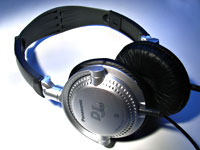 Although in-ear bud headphones are all well and good for strutting down the street with your iPod/PDA/smartphone in your pocket, when it comes to DJing or listening at home, you might need something a little more substantial.
Although in-ear bud headphones are all well and good for strutting down the street with your iPod/PDA/smartphone in your pocket, when it comes to DJing or listening at home, you might need something a little more substantial.
If you’ve got deep pockets (and don’t mind looking like Biggles coming back from a WW2 mission), you can’t go wrong with the amazing Grado SR60 headphones (review June 2005), but if you’re looking for something cheap and cheerful, the Panasonic DJ100 headphones are worth a look.
Optimistically described as ‘professional’ headphones (yeah, right), the silver and black closed-ear headset is more of the cheap’n’cheerful variety, although the build quality seems pretty reasonable for a street price of around £18.
In case you’re not sure what this ‘closed-ear’ stuff is all about, it means that the headphones completely cover yer lug’oles, and thus reduce extraneous sounds interfering with your music.
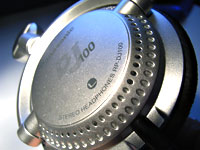 Designed for DJs
Designed for DJs
You’ll note the headphones describe themselves as being for DJs – this is due to their closed ear construction (a bit of a must for monitoring in noisy environments) and the fact that the individual earpieces rotate so you can listen to one earpiece without having to put the headphones on your head.
If looking like a DJ isn’t your thing, the ‘cans’ (as those in the music biz like to call them) felt comfortable enough when worn ‘normally’ with enough travel on the plastic extending headband to cover head sizes from a pinhead skinhead to a beehived big ‘ead.
There’s also a generous length of cable supplied with the ‘phones (around 2 metres) with a gold plated 2.5mm jack plug and 3.5mm adapter supplied.
A particularly nice touch is that the Panasonic RP-DJ100’s can fold up into an impressively small space, so that you can wedge them into your record bag or laptop case.
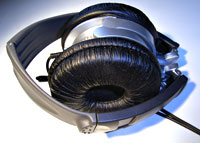 The sound
The sound
Naturally, at this price level you’re not going to get anything approaching hi-fi, but the RP-DJ100’s produced a sound that was neither too harsh or too overbearing, with the XBS Extra Bass System adding a bit of oomph which might come in useful when listening through a cheapo MP3 player.
The Panasonics were also capable of knocking out pretty loud volumes without too much distortion which is an essential attribute for Djing.
The verdict
Considering their build and price level, we were all set to give the Panasonic RP-DJ100’s top marks until the things let us down at a gig, when both channels cut out.
After some investigation, it seemed the phones had suffered the all-too-familiar problem of a dodgy jackplug, where the wiring had worked loose inside.
No problem we thought -let’s whip out the soldering iron and do a quick on the spot repair.
Annoyingly, once we’d removed the jack, ready for replacement, we found out that Pansonic were using the chuffing annoying lacquer coating cables (popular with Sony models), which are a ruddy pain to solder (see Headwize.com for solutions).
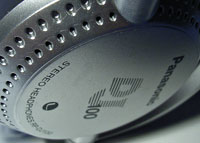 So after our own (paid for) headphones conked out after just four months and with no chance of a replacement after voiding our guarantee with the attempted emergency repair, we’ve had to rapidly downsize our enthusiasm.
So after our own (paid for) headphones conked out after just four months and with no chance of a replacement after voiding our guarantee with the attempted emergency repair, we’ve had to rapidly downsize our enthusiasm.
We certainly wouldn’t recommend them for working DJs as we don’t think they’re up to the job. After all, if you’re serious about your playing, it’s defintely worth paying the extra for a robust, high quality pair. However, for bedroom-bound disk-spinners and iPodders on the move, they might be worth a look. So long as you treat them gently.
Looks 65%
Sound quality 60%
Build quality 50%
Overall 55%
Panasonic RP-DJ100 Specs:
XBS Extra Bass System
Travel fold design
28mm driver unit
Response bandwidth 14 – 24000 Hz
Sensitivity* 102 dB/mW
Impedance 24 Ohm
Diaphragm 1.1 in
Magnet Type Neodymium Rare-earth magnet
 Something will go wrong sooner or later with nearly one-fifth of all notebooks, with a new hardware component needed to sort the problem, according to a new survey by industry analysts Gartner.
Something will go wrong sooner or later with nearly one-fifth of all notebooks, with a new hardware component needed to sort the problem, according to a new survey by industry analysts Gartner. Laptops have also shown a significant improvement, with features like suspension mounting of hard drives and rubber bumpers between laptop lids and keyboards helping keep the damage tally down.
Laptops have also shown a significant improvement, with features like suspension mounting of hard drives and rubber bumpers between laptop lids and keyboards helping keep the damage tally down. Motherboard fry-ups and hard drive breakdowns are now the two main sources of failure for desktops, a situation brought about by the increasingly complexity of the things, with more components being integrated into the motherboard.
Motherboard fry-ups and hard drive breakdowns are now the two main sources of failure for desktops, a situation brought about by the increasingly complexity of the things, with more components being integrated into the motherboard.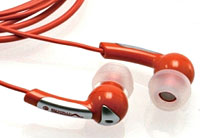 More often than not, the in-ear headphones that come bundled with MP3 players are weedy affairs, producing a feeble floppy fart of a low end when you’re looking for a thunderous bass.
More often than not, the in-ear headphones that come bundled with MP3 players are weedy affairs, producing a feeble floppy fart of a low end when you’re looking for a thunderous bass.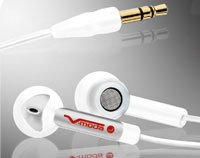 The human ear can only hear frequencies around 20 to 20,000 Hz, and that’s only when you’re young and healthy.
The human ear can only hear frequencies around 20 to 20,000 Hz, and that’s only when you’re young and healthy. This improved the sound no end, and the ‘phones are great for using on planes and trains when you want to hear as little exterior noise as possible and don’t fancy forking out for expensive noise cancelling units.
This improved the sound no end, and the ‘phones are great for using on planes and trains when you want to hear as little exterior noise as possible and don’t fancy forking out for expensive noise cancelling units.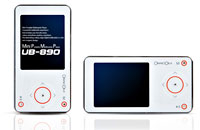 Lined up on the new product runway and awaiting clearance for take off is the slick looking Oracom UB890 portable media player.
Lined up on the new product runway and awaiting clearance for take off is the slick looking Oracom UB890 portable media player.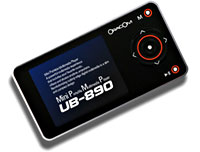 There’s also built in equaliser and 3D sound and onscreen visual effects to keep the easily-bored entertained.
There’s also built in equaliser and 3D sound and onscreen visual effects to keep the easily-bored entertained.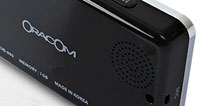 Rounding off the gadget-fest, there’s also an alarm clock, sleep timer, built-in speakers (500mW + 500mW) and an iPod-esque ‘Touch Sensor Key Pad’ for shimmying through the menus.
Rounding off the gadget-fest, there’s also an alarm clock, sleep timer, built-in speakers (500mW + 500mW) and an iPod-esque ‘Touch Sensor Key Pad’ for shimmying through the menus.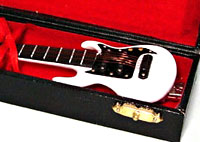 Straight out of the, “What’s The Chuffin’ Point Of That” Dept comes two utterly daft USB devices.
Straight out of the, “What’s The Chuffin’ Point Of That” Dept comes two utterly daft USB devices.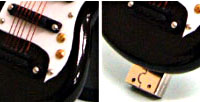 But if you fancy indulging in a bit of micro air guitar work while carrying around a paltry amount of over-priced flash memory, point your credit card in the direction of geekstuff4u.com
But if you fancy indulging in a bit of micro air guitar work while carrying around a paltry amount of over-priced flash memory, point your credit card in the direction of geekstuff4u.com Underwater windows
Underwater windows We’re not sure at what depth the thing keeps on working or why anyone would want to be logging on to Windows in their Speedos, but there’s an English language version of the software available, and the whole sub-aqua caboodle could be yours for just €137.
We’re not sure at what depth the thing keeps on working or why anyone would want to be logging on to Windows in their Speedos, but there’s an English language version of the software available, and the whole sub-aqua caboodle could be yours for just €137.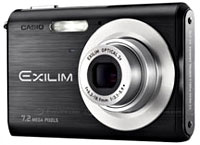 Casio have added the new Exilim Zoom EX-Z70 digital camera to their EXILIM range, ramping up the pixel count to a hefty 7.2 megapixels.
Casio have added the new Exilim Zoom EX-Z70 digital camera to their EXILIM range, ramping up the pixel count to a hefty 7.2 megapixels.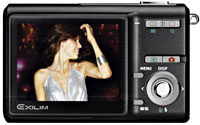 In an attempt to stave off the wobbles, Casio’s Anti Shake DSP is built in, although the anti-shake stuff is achieved through ramping up the ISO and dropping the image size, so it’s nowhere as good as proper optical image stabilisation.
In an attempt to stave off the wobbles, Casio’s Anti Shake DSP is built in, although the anti-shake stuff is achieved through ramping up the ISO and dropping the image size, so it’s nowhere as good as proper optical image stabilisation.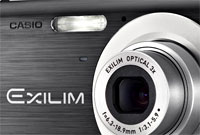 Available in “luxurious” black or high quality silver, the black EX-Z70 will be on the shelves from the beginning of July (you’ll have to wait a month for the silver version) for around £230 ($422, €335).
Available in “luxurious” black or high quality silver, the black EX-Z70 will be on the shelves from the beginning of July (you’ll have to wait a month for the silver version) for around £230 ($422, €335).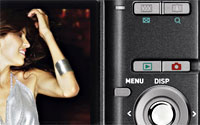 Contrast type AF (selectable between spot, multi)
Contrast type AF (selectable between spot, multi)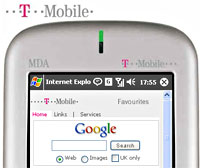 T-Mobile has announced that it is to extend its web’n’walk unlimited mobile Internet access service to include pay-as-you-go customers.
T-Mobile has announced that it is to extend its web’n’walk unlimited mobile Internet access service to include pay-as-you-go customers. All the web’n’walk handsets come pre-configured to connect immediately to the Internet, with customers able browse any web pages they chuffing well like rather than the ‘cut-down’ mobile-optimised web pages available through some services.
All the web’n’walk handsets come pre-configured to connect immediately to the Internet, with customers able browse any web pages they chuffing well like rather than the ‘cut-down’ mobile-optimised web pages available through some services.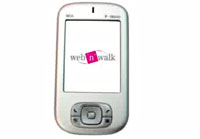 We love it
We love it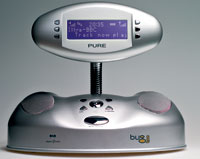 It might look like a weird mutation between Dr Who’s K9 and and the wobbly robot from Lost In Space, but we like the fact that PURE Digital’s new Bug TOO DAB radio is brave enough to stand out from the current crowd of wood’n’plastic identikit DAB radios.
It might look like a weird mutation between Dr Who’s K9 and and the wobbly robot from Lost In Space, but we like the fact that PURE Digital’s new Bug TOO DAB radio is brave enough to stand out from the current crowd of wood’n’plastic identikit DAB radios.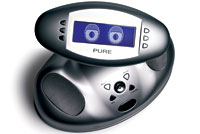 This usefully displays artists names, song titles, news, sports results and other information, with the EPG feature offering programme information and schedules.
This usefully displays artists names, song titles, news, sports results and other information, with the EPG feature offering programme information and schedules.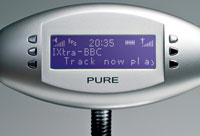 There’s also alarm, sleep and timer record functions – including an MP3 alarm – so the Bug TOO could be a handy bedside radio. We’re not quite sure why anyone would want 20 configurable alarms though, but if that’s what you’re after, the Bug’s got ’em.
There’s also alarm, sleep and timer record functions – including an MP3 alarm – so the Bug TOO could be a handy bedside radio. We’re not quite sure why anyone would want 20 configurable alarms though, but if that’s what you’re after, the Bug’s got ’em.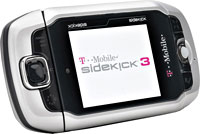 T-Mobile has finally officially announced the T-Mobile Sidekick 3, adding a new trackball controller, Bluetooth and EDGE data to the popular Sidekick 2.
T-Mobile has finally officially announced the T-Mobile Sidekick 3, adding a new trackball controller, Bluetooth and EDGE data to the popular Sidekick 2.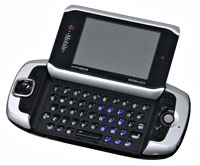 The Sidekick boasts a new 1.3 megapixel camera and assist light, with a large 65k colour, transflective TFT display supporting a rather underwhelming 240×160 pixel resolution.
The Sidekick boasts a new 1.3 megapixel camera and assist light, with a large 65k colour, transflective TFT display supporting a rather underwhelming 240×160 pixel resolution.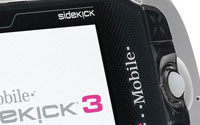 New for version three is a Bluetooth system supporting both the OBEX Push and Headset/Hands Free profiles and a mini-USB port for transferring files from a PC.
New for version three is a Bluetooth system supporting both the OBEX Push and Headset/Hands Free profiles and a mini-USB port for transferring files from a PC. Hot on the heels of Windows Messenger Live comes Yahoo’s new upgrade to their own Instant Messaging service, offering plug-ins to let users share more information.
Hot on the heels of Windows Messenger Live comes Yahoo’s new upgrade to their own Instant Messaging service, offering plug-ins to let users share more information. Widgets and Plug Ins
Widgets and Plug Ins Of course, there’s nothing new to all this embedding malarkey, with the industry boys – Microsoft, Google, AOL and Skype – all falling over themselves to make desktop-based applications shareable over IM services, but Yahoo are hoping that by opening up Messenger to become more of a distribution platform they’ll be able to attract punter-luring new services.
Of course, there’s nothing new to all this embedding malarkey, with the industry boys – Microsoft, Google, AOL and Skype – all falling over themselves to make desktop-based applications shareable over IM services, but Yahoo are hoping that by opening up Messenger to become more of a distribution platform they’ll be able to attract punter-luring new services.